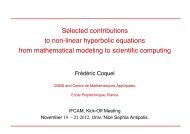The construction of the wonderful canon of logarithms
The construction of the wonderful canon of logarithms
The construction of the wonderful canon of logarithms
Create successful ePaper yourself
Turn your PDF publications into a flip-book with our unique Google optimized e-Paper software.
2 2 Construction <strong>of</strong> <strong>the</strong> Canon.<br />
This necessarily follows from <strong>the</strong> definitions <strong>of</strong><br />
arithmetical increase, <strong>of</strong> geometrical decrease, and<br />
<strong>of</strong> a logarithm. For by <strong>the</strong>se definitions, as <strong>the</strong><br />
sines decrease continuallyJn geometrical proportion,<br />
so at <strong>the</strong> same time <strong>the</strong>ir <strong>logarithms</strong> increase<br />
by equal additions in continuous arithmetical progression.<br />
Wherefore to any sine in <strong>the</strong> decreasing<br />
geometrical progression <strong>the</strong>re corresponds a logarithm<br />
in <strong>the</strong> increasing arithmetical progression,<br />
namely <strong>the</strong> first to <strong>the</strong> first, and <strong>the</strong> second to <strong>the</strong><br />
second, and so on.<br />
So that, if <strong>the</strong> first logarithm corresponding to<br />
<strong>the</strong> first sine after radius be given, <strong>the</strong> second<br />
logarithm will be double <strong>of</strong> it, <strong>the</strong> third triple, and<br />
so <strong>of</strong> <strong>the</strong> o<strong>the</strong>rs ; until <strong>the</strong> <strong>logarithms</strong> <strong>of</strong> all <strong>the</strong><br />
sines be known, as <strong>the</strong> following example will<br />
show.<br />
33- Hence <strong>the</strong> <strong>logarithms</strong> <strong>of</strong> all <strong>the</strong> proportional sines <strong>of</strong> <strong>the</strong><br />
First table may be included between near limits, and consequently<br />
given with sufficient exactness.<br />
Thus since (by 27) <strong>the</strong> logarithm <strong>of</strong> radius is o,<br />
and (by 30) <strong>the</strong> logarithm <strong>of</strong> 9999999, <strong>the</strong> first<br />
sine after radius in <strong>the</strong> First table, lies between <strong>the</strong><br />
limits 1.000000 1 and 1 0000000; necessarily <strong>the</strong><br />
logarithm <strong>of</strong> 9999998.0000001, <strong>the</strong> second sine<br />
after radius, will be contained between <strong>the</strong> double<br />
<strong>of</strong> <strong>the</strong>se limits, namely between 2.0000002 and<br />
2.0000000 ; and <strong>the</strong> logarithm <strong>of</strong> 9999997.0000003,<br />
<strong>the</strong> third will be between <strong>the</strong> triple <strong>of</strong> <strong>the</strong> same,<br />
namely between 3.0000003 and 3.0000000. And<br />
so with <strong>the</strong> o<strong>the</strong>rs, always by equally incfeasing<br />
<strong>the</strong> limits by <strong>the</strong> limits <strong>of</strong> <strong>the</strong> first, until you have<br />
completed <strong>the</strong> limits <strong>of</strong> <strong>the</strong> <strong>logarithms</strong> <strong>of</strong> all <strong>the</strong><br />
proportionals <strong>of</strong> <strong>the</strong> First table. You may in this<br />
way


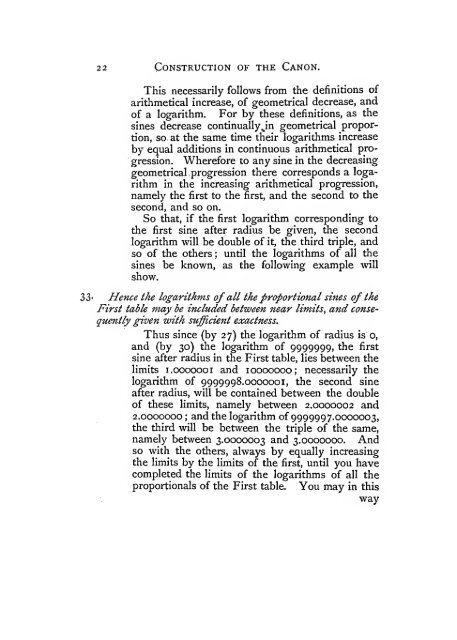
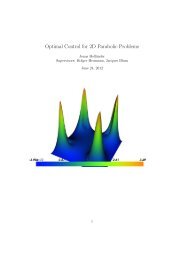
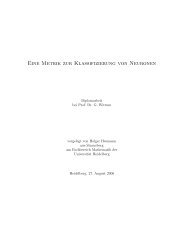
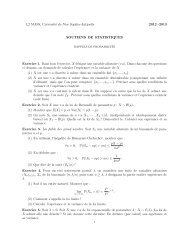
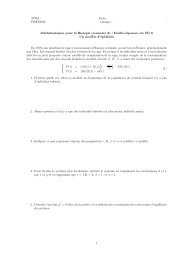


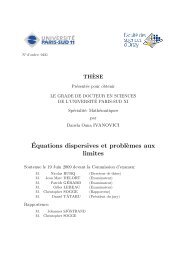
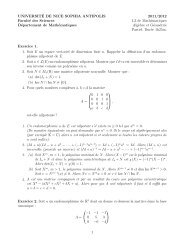
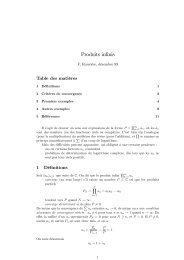
!['eries enti\`eres (+ [D78 Th d'Abel angulaire])](https://img.yumpu.com/14067031/1/184x260/eries-entieres-d78-th-dabel-angulaire.jpg?quality=85)
